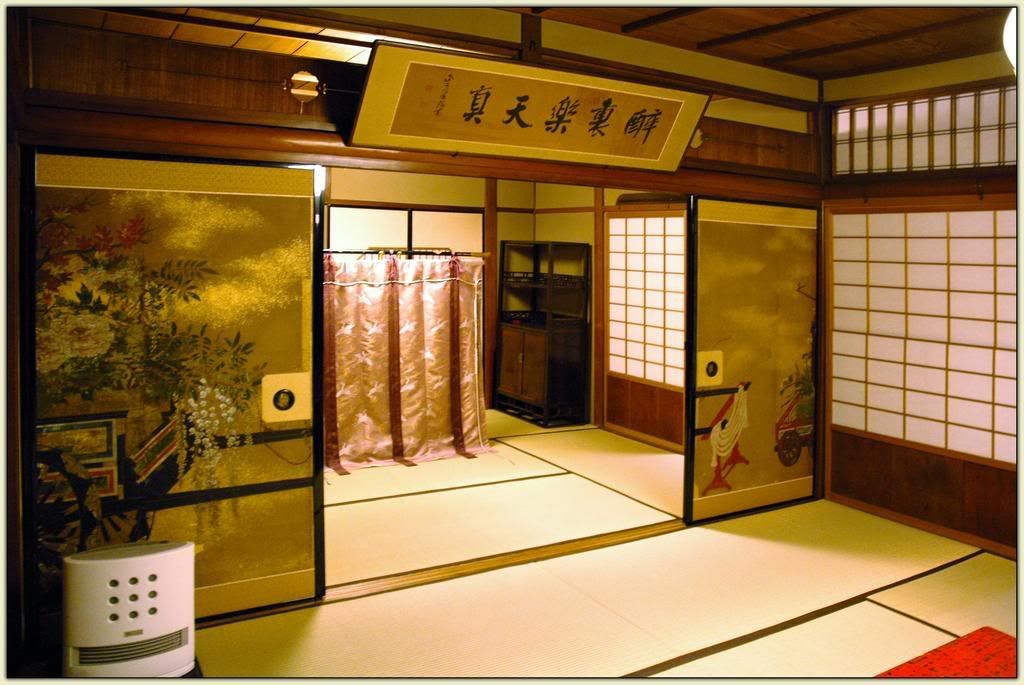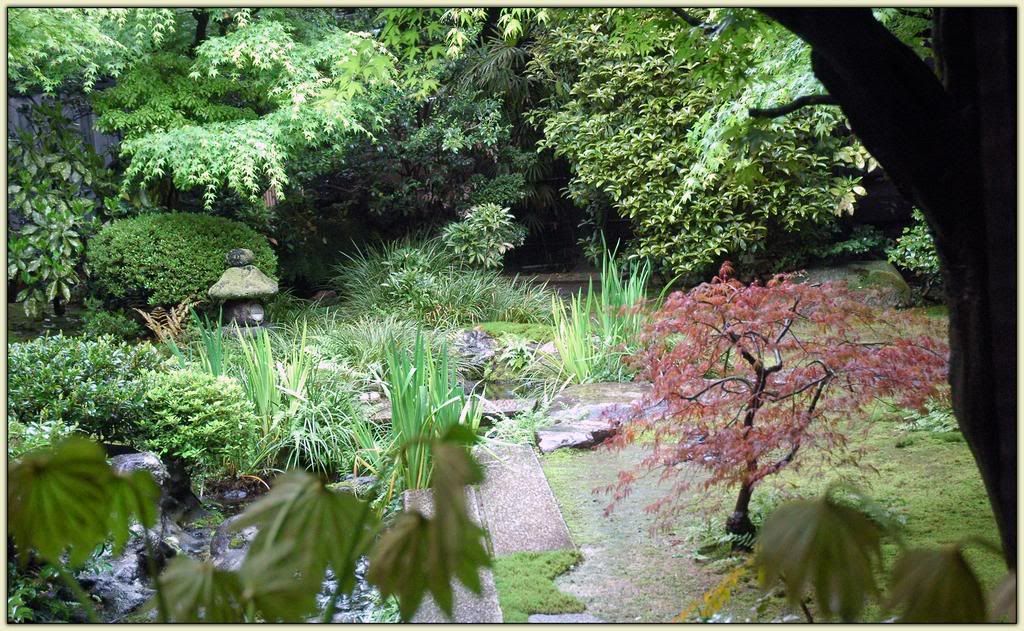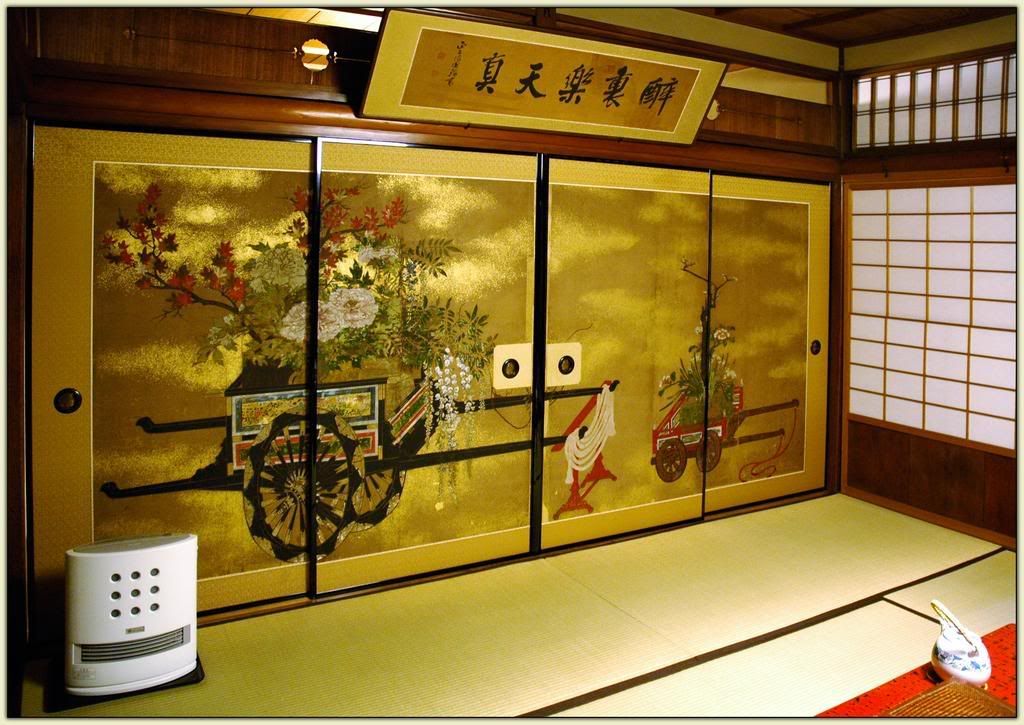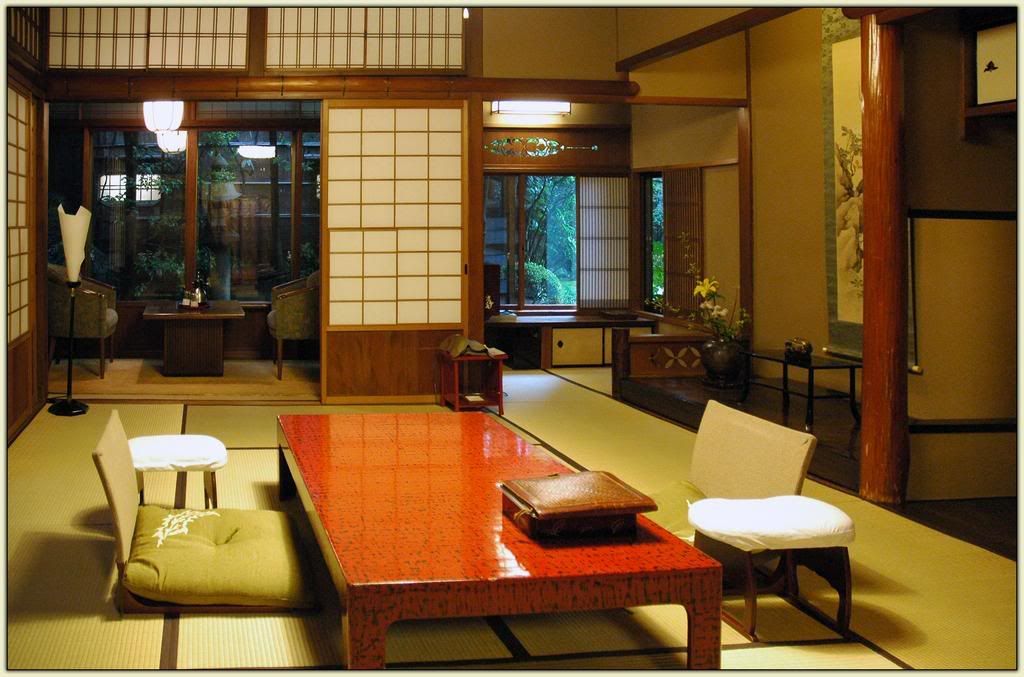
Room 33 at the Hiiragiya Ryokan.
We Jews are very big on tradition, the respect for which is one of the few things we have in common with the Japanese.
In order to experience traditional Japanese culture at its highest, most exquisite level, one must, when in Japan, stay at a Japanese inn: a ryokan. A night at a ryokan is generally more costly than a night at a comparable Western-style hotel, but there is no better way to get the flavor of staying in a Japanese home. And besides, breakfast and dinner are included in the price.
In the classic ryokan, your room serves as both dining room and bedroom. Dinner is served on a low table in the middle of the room; when it’s time to retire, the innkeeper moves the table aside and sets up a futon right there on the floor. Come morning, the futon is removed and the table replaced for breakfast service.
Shoes are an absolute no-no - you remove them as you enter the ryokan, donning a pair of slippers for walking the public areas. You remove the slippers before entering the room itself, the floor of which is covered with tatami (woven reed) mats. There’s a separate pair of slippers provided for use in the toilet - and only in the toilet.
We stayed at the Hiiragiya Ryokan in Kyoto, possibly the finest traditional Japanese lodging in the country. The Hiiragiya occupies a building that has stood since 1818; our room - previous occupants of which include Yukio Mishima (the ultra-nationalist Japanese author and actor) and Charlie Chaplin - was over 150 years old and contained decorative shoji screens painted two centuries ago. Modern touches include telephones, televisions, and electrically controlled curtains - the equipment is discreetly disguised behind cloth covers and operated by cleverly designed, unobtrusive remote control.
Our arrival was on a rainy afternoon, a perfect time to sequester ourselves after a morning spent exploring one of the local department stores. Japanese department stores, it should be noted, are an entirely different species than their American counterparts. The sheer variety of goods, coupled with the obsequious überpolitesse of the salesforce, makes Nordstrom look like a flea market. I could have spent the whole day in the lower level alone - a floor entirely devoted to food in all its bizarre Japanesical variety.
But we had a date at the Hiiragiya, so we extracted ourselves from the depaato and grabbed a cab. I should point out that my foresight in printing up a map showing directions to our ryokan in Japanese turned out to be a major help.
We showed up, removed our shoes in the foyer, and were greeted warmly by what appeared to be the entire inn staff. Within moments of arriving in our room, a kimono-clad server brought in a bowl of matcha (traditional bitter green tea), a cup of bancha (plain old green tea), and a paper-wrapped pastry elegantly presented on a minuscule tray. As rain pattered down on the carefully manicured garden visible through our windows, we changed into our cotton yukata robes. There is no need for street clothes anywhere in the ryokan, as long as you have your yukata.
At 7:30, the hour we had selected for our dinner service, the traditionally clad Inn-Ladies began delivering a lengthy procession of exquisitely-crafted little dishes: a true kaiseki banquet.
What was the food like? Suffice it to say that the menus I post every month or so from the Sommelier Guild don’t even come close to the kaiseki-ryori served at the Hiiragiya. Here’s what we had for dinner:
Aperitif (Shokuzen-shu)
Cherry blossom cocktail
First appetizer (Sakizuke)
Bonito, Canola blossom buds, Sticky soy sauce with Japanese pepper
Second appetizer (Hassun)
Sea bream roe in jellied broth
Hosta seasoned with soy sauce
Eel on tofu ball (crushed tofu, carrot, kikurage mushroom, pea, and egg)
Grilled mugwort tofu pudding
Duck, broad bean, ormer, dried sea cucumber belly
Sashimi Dishes (Mukouzuke)
Japanese spiny lobster
Sea bream
Tuna
Wasabi mizuna cress, yam, wasabi blossom, laver, wasabi leaves
Simmered Dishes (Nimono-wan)
Greenling, uguisuna-spinach, carrot, yuzu citrus
Grilled Dishes (Yaki-zakana)
Grilled trout
Miso wrapped in lotus root, ginger stick
Steamed Dishes (Mushi-mono)
Steamed sea bream in pea bun
Horsetail, bracken, ginger, sticky kudzu and bamboo shoot sauce
Simmered Dishes (Takiawase)
Bamboo shoot, wakame seaweed, butterbur, kinome (young leaves of Japanese pepper)
Deep-fried Dishes (Age-mono)
Fried sweetfish
Koshiabura (edible wild plants)
Gyozyaniniku (a type of long green onion)
Salt, tempura dipping sauce
Vinegared Dishes (Su-no-mono)
Firefly squid
Scallop, Udo (edible wild plant)
Chive, Japanese ginger, vinegared miso
Soup (Tome-wan)
Aka-miso soup with yuba (skin of soybean milk), wild rocambole, agarikusu mushroom, Japanese pepper
Rice (Gohan)
Rice, mixed bamboo shoots
Pickles (Kou-no-mono)
Kyousakura (turnip pickled with cherry blossom, cherry leaves, and salted plum juice), Japanese white radish, canola blossom buds
Dessert (Mizu-mono)
Gyuhi rice cake, mango, strawberry, mint
We washed all these miniature Works of Art down with liberal doses of bancha and warm sake. Yummy? You betcha.
Every window looked out on a tranquil garden with running water and happy, swimming koi. We had our own private Japanese-style cedarwood bath as well. Nothing like a hot bath after dinner to relax aching travel-worn muscles.

Outside our room, a Japanese garden.
As raindrops splashed outside and we relaxed in our little haven, the innkeepers came in to whisk away the remnants of our dinner and set up the futons. Ohhh, the futons. Who knew that sleeping on the floor could be like sleeping on a cloud?
After a restful night, with sleeping gear stowed away, we breakfasted in our room on the finest delicacies. I ate slowly, not wanting the morning to end.
Checking out was like bidding farewell to old friends. In the best of all possible worlds, I’ll be back one day.
More pix below the fold.





















No comments:
Post a Comment